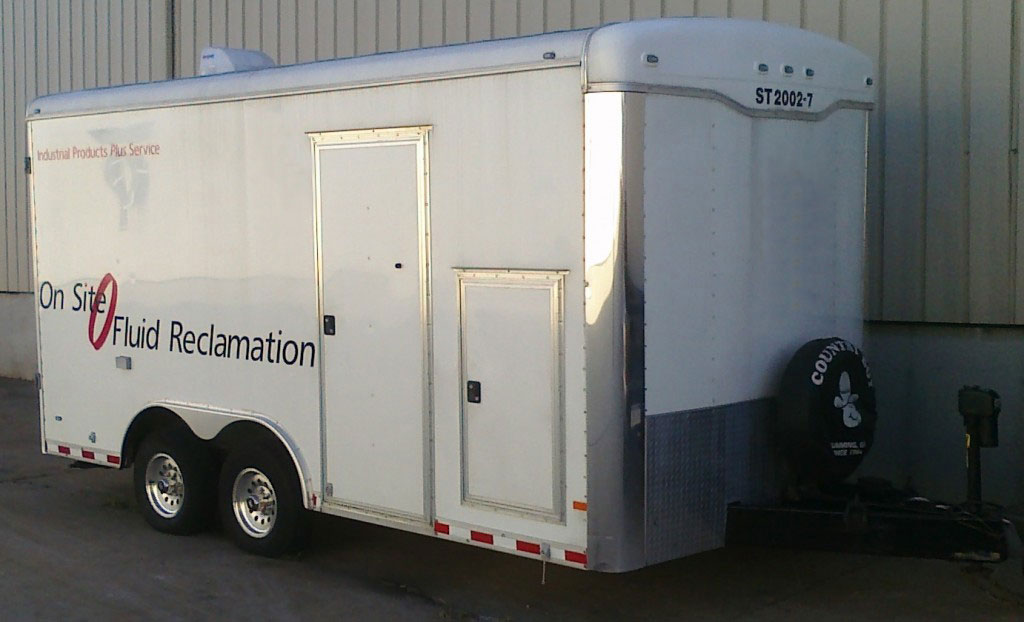On-Site/Off-Site Reclamation

Recognizing a Reclamation Candidate
Reclaiming industrial lubricants can be advantageous for everyone. The fluid manufacturer and the fluid user must cooperate, and be able to answer the following questions:
- What constitutes a viable reclamation candidate?
- If I choose to reclaim, how will I know that the oil has been successfully reclaimed?
Answering the following questions can help determine if an onsite oil reclamation situation exists:
- Can the leaked or spilled oil be collected and contained?
- Is there sufficient fluid volume to create an advantageous reclamation situation? (Rule of thumb is 1,000 gallons. This number could be lower depending on the original cost of fluid, ease of reclamation, proximity and availability of reclamation equipment.)
- Has any other liquid contaminant (other than water) or chemical been mixed with this candidate oil?
If the answer to questions one and two are yes, and the answer to question three is no, then a sample should be submitted for testing.
In some cases, MB Fluid Services can remove liquid contaminants other than water, but proper testing and the identification of those contaminants must be confirmed. It is very important that samples of all fluids should be taken prior to reclamation.
These samples should be tested for the following:
- Sediment by centrifuge
- Viscosity, cSt at 40ºC (D445)
- Oxidation and Sulfation levels
- RPVOT, minutes, (D2272)
- Water Separation at 130ºF (D1401)
- Trace Metals Analysis, ppm (D5185)
Once the fluid is determined reclaimable, then we can reclaim the product based on your schedule and at times without the need for you to shut your operation down. MB Fluid Services uses the latest technology with a process that begins with inspecting the equipment, equipment location and the environment in which the reclamation process will take place. A sample is taken both before and after to yield a comparison result of the effect of reclamation. In most cases we can reach ISO standards of 17/16/15 and in many cases even less. MB Fluid Services has many different pieces of reclamation equipment; from our portable filtration units, vacuum dehydration/filtration units to our large 48ft Semi fully equipped with generator power, storage tanks and reclamation equipment. Our staff of highly trained technical experts, and service technicians can collect, reclaim and return the lubricant to your valuable equipment or into designated storage tanks so that you can continue meeting your client’s needs.
Beware of reclaimers who make the following statements:
- We can reclaim any oil.
- We can re-additize any oil.
- We can make it better than new.
Statements of this nature simply are not true. At MB Fluid Services we pride ourselves on our integrity, so if it cannot be done we will not do it. It important to know that some oils cannot be reclaimed and some should not be reclaimed for economic reasons. Additive formulations are often proprietary, or the additives are not easily purchased. The brand of the original oil does not matter.In the normal course of events, all industrial oils are on a naturally occurring degradation curve. If the oil stays in the system long enough, it will oxidize and simple reclamation may not be a viable option. However, if during its normal life, the oil spills or leaks and mixes with dirt and water, it may still be salvageable. If the oil becomes extremely contaminated with particulate even while still in the system, it may be salvageable. However, if the oil blends with incompatible oils and/or chemicals while in the system, on the floor or in the containment area, recycling may be a better choice than reclaiming.
A representative sample of the oil considered for reclamation should be sent to a laboratory for testing it against its original performance specifications. The test results reflect the sample that was submitted. Therefore, it must accurately represent the fluid considered for reclamation.


Benefits
- Minimize Lubricant Waste and Environmental Effects
- Decrease the overall cost of Lubricants and Disposal Cost
- Extend the Life of Lubricants and Equipment Life
- Increase the efficiency and reliability of equipment
- Prevent unscheduled downtime
- Increase work force availability
